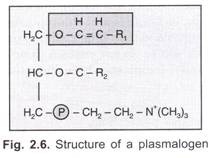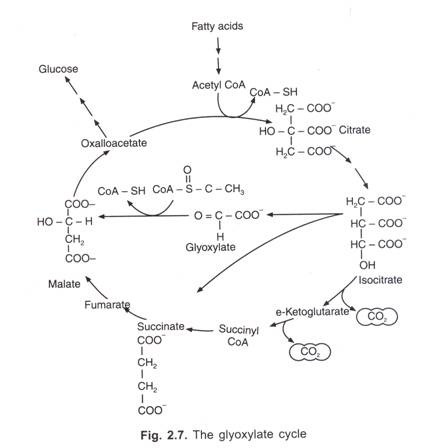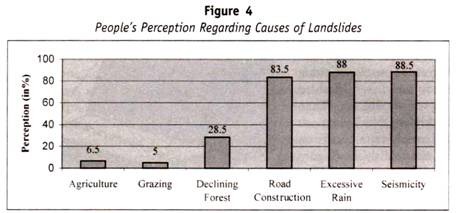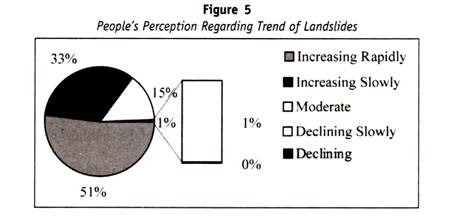Let us make an in-depth study of the general introduction to mycology. The below given article will help you to learn about the following things:- 1. Fungi and Fungus-caused Diseases 2. Dermatophytes and 3. Infections of Deeper Tissues.
Fungi and Fungus-caused Diseases:
Fungi (Lat. fungus— mushroom) are eukaryotes with a distinct nucleus and rigid chitinous cell wall and were formerly regarded as plants without chlorophyll and are now grouped with protozoa, slime moulds and most algae as Higher Prostita. Mycoses are infections caused by true fungi.
Eumycetes contains more than 80,000 species and can be classified morphologically into:
1. Phycomycetes are fungi with an unicellular, non-septate mycelium (500 species). The spores (endospores) are enclosed in special sporangia. Reproduction is sexual and asexual. Atypical representative of Mucor (bread mould) is Mucor mucedo. Pathogenic species of this Mucor (mould) may cause infection of lungs, middle ear and general severe infectious process in man. The mould (filamentous) or mycelial fungi grow as long filaments (hyphae) and reproduce by formation of spores.
The major part of the mycelium, the vegetative mycelium, grows and penetrates into the substrate absorbing nutrients for growth; other hyphae form aerial mycelium and protrude from the vegetative mycelium into the air. They form various kinds of spores and disseminate them in the air.
2. Ascomycetes or sac fungi (35,000 species) have a multicellular mycelium. They reproduce sexually by means of ascospores (spores which develop in spherical spore cases, asci— ascus (Gr. askos — sac) and asexually by conidia (exospores which have the function of asexual reproduction in many fungi).
The genus Aspergillus belongs to the class Ascomycetes. These fungi have divided septate mycelium and an unicellular conidiophore which terminates in a fan-like row of short sterigmata from which the spores are pinched off in chains — conidia (Gr. Konis—dust).
The fruiting part of the aspergillus resembles a jet of water from a watering can and hence the name “Sprinkler” mould. Aspergillus niger is a representative of Aspergilla and is widespread in nature, certain species may cause aspergillosis of the lungs, ear and eye of man and may infect the whole body.
The genus Penicillium (Fig. 4.1) belongs to the class Ascomycefes. The mycelium and conidiophore are multicellular. The fruiting body is in the shape of a brush. The conidiophore branches towards its upper part and terminates into sterigmata from which even- rowed chains of conidia are pinched off. This genus of fungi is widespread in nature (fodder, milk products, moist objects, old leather, ink, jam).The type species is Penicillium glaucoma.
Certain species (Penicillium notatum, Penicillium chrysogenum etc.) are used for the production of penicillin which is widely used in the treatment of many infectious diseases. Some species of this genus of fungi are pathogenic and cause infection of the skin, nails, upper respiratory tract, lungs and other organs of man.
Yeasts belong to the class Ascomycetes. They are large, oval, round, rod-shaped cells. They have a double cell wall and well defined nucleus. The cytoplasm is homogeneous, sometimes of a fine granular structure. It contains inclusions (glycogen, volutin, lipid) and also filamentous bodies — chondriosomes which are responsible for synthetic process of the cell.
Yeasts multiply by budding, fission, sporulation and some of them reproduces asexually. Daughter cells produced by budding from the parent cell transform into independent individuals. The yeasts can also reproduce by sporulation. When there is lack of nutrition, 2, 4, 8 or 16 endospores are formed inside the cells of some species of yeast.
Yeast cell forming the ascospores is called the ascus (sac), while sporulating yeasts are known as Ascomycetes, since the yeasts ferment various carbohydrates, they are widely used in brewing beer, in wine making and in baking bread. Saccharomycescerevisiae, S. ellipsoides are typical representatives of the yeasts.
Among the asporogenic yeasts (family saccharomycetaceae), there are species pathogenic to man; they are called Candida which cause grave diseases known as candidiasis. They occur as a result of the growth inhibition of the normal micro flora by antibiotics used for treating a number of infectious diseases and inflammatory processes.
3. Basidiomycetes:
Fungi with a multicellular mycelium. These organisms predominantly reproduce asexually by basidiospores (basidia reproductive organs in which a certain number of spores develop, usually 4). Certain species are free parasites. Two hundred species of mushrooms are used as food. Twenty five species of mushrooms are poisonous. Smut fungi invade grains crops causing disease known as smut. Rust fungi affect sunflowers and other plants producing orange-coloured spots on infected plants.
4. Imperfect fungi (Fungi imperfecti):
Imperfect fungi are a rather large group of fungi consisting of a multicellular mycelium without either asco or basidiosporangiophore, but only with conidia. Reproduction is asexual; but the sexual reproduction is unknown. To this class belong the orders Hyphomycetales, Melanconiales and Sphaeropsidales.
Among the hyphomycetes, which may be of great interest to the physicians are:
Fusarium graninearum causing intoxication in human (drunken bread) and Fusarium sporotrichicidales causing intoxication in man and domestic animals who had eaten the grain crops which had remained in the fields during the winter.
Pathogenic species of imperfect fungi are causative agents of dermatomycoses (superficial mycoses):
Favus (Acharion schoenleini); trichophytosis (Trichophyton violaceum), Microsporosis (microsporum lanosum), epidermophytosis (Epidermophyton inguinale).
Pathogenic Fungi:
Aspergilli:
The pathogenic species are:
Aspergillus fumigatus, A. roseus, A. flavus, A. nigricans. More than forty species have been recovered from patient suffering from various clinical forms of Aspergillosis. In human beings, they are responsible for lesions in the lungs, bronchi, cornea, ear canal and other organs and tissues. The disease is prevalent among millers.
Penicilli:
There are more than thirty species of Penicillium pathogenic to man. They cause penicilliosis affecting the skin, nails, ears, upper respiratory tract and lungs (pseudo tuberculosis). Pathogenic species are: P. minutum, P. linguae, P. glaucum and P. album (Fig. 4.1).
Mucor Fungi:
More than fifteen species of Mucor fungi cause mucor mycosis characterised by lung lesions similar to tuberculosis in their clinical manifestations, keratitis, otomycosis, vulvovaginitis, gamma of the skin. Laboratory diagnosis of aspergillosis, penicilliosis and mucormycosis is made by microscopic examination of the pus, its inoculation into common nutrient media or Sabouraud’s medium and subsequent cultivation at 25 – 28°C.The treatment is by nystatin.
Imperfect Fungi:
Many imperfect fungi have septate hyphae and asexual conidia resembling those of Ascomycetes, but sexual or “perfect” state has not yet been described for these fungi — hence they are called Fungi imperfecti. A majority of the pathogenic moulds, yeasts, yeast like fungi (Candida) and dimorphic fungi (Histoplasma, Paracoccidioides) belong to this group —fungi imperfecti.
Sporotrichum has a septate mycelium. Lateral branches extend from the hyphae bearing single conidia or clusters of conidia at their sides or ends. The Sporotrichum grows on common nutrient media (pH 6.5) producing the best growth on Sabouraud’s medium at 25 to 28°C. Growth is slow. The colonies are leathery, fluffy, smooth or folded and quite frequently pigmented.
This causative agent enters the subcutaneous tissue and the lymph nodes through abrasions of the skin as a result gumma similar to that in syphilis and tuberculosis are produced in the pharynx, larynx, muscles and synovial membrane. It may also cause abscess of the bones, joints and internal organs. Antibiotics and sulphonamides have no effect.
Condida (Fig.4.2):
They are unicellular organisms which reproduce by budding. Neither conidia nor ascospores are produced. They possess no true mycelium; the pseudo mycelium is devoid of a membrane and septa and develops by successive or terminal budding.
Candida albicans and C. tropicalis are most important in human pathology. About 20 species of the genus Candida are human pathogens and are present on the skin and mucous membrane of the mouth, gastrointestinal tract and urinogenital organs of man. They occur on fruit, vegetables and other foodstuffs, in bath sewage, washing from catering establishments and on dishes.
The infection is acquired when body is weakened and in the presence of unfavorable conditions (increased moisture, skin maceration, long term occupational contact with sugar containing fruit and vegetables, inadequately disinfected baths). Debilitated children, bath-house attendants, confectioners are susceptible to candidiasis.
Candidiasis associated with the long term use of antibiotics (penicillin, chlortetracydine etc.) have become of great importance. They cause profound disturbances of symbiotic relationship among normal micro flora resulting into a condition of dysbacteriosis which enhances intensive multiplication, spread of the co-members into the buccal, intestinal and vaginal mucosa and their transformation from the saprophyte state into conditionally pathogenic and pathogenic forms. As a result, local and general lesions develop.
The yeast-like fungi affect the skin between the fingers and toes in the inguinal and axillary folds, the nails and nail folds, the mucous membranes of the lips and mouth corners, the tongue, fauces, esophagus, and, sometimes, the vagina with the development of white films. Infection of the mucosa is known as “Thrush”.
The gastrointestinal, respiratory, urogenital and nervous system, liver, biliary tract, pancreas, bones, kidney are also involved in candidiasis. The most common Candida infection is vaginitis or vaginal thrush which is characterised, in pregnant women, by a whitish discharge with a pH below 5.2 and, microscopically, some pus cells and many yeasts, including pseudo mycelium, can be seen. In infection due to trichomonas and bacteria, the discharge is more purulent and less acid.
Oral thrush occurs in debilitated or bottle fed infants. Creamy white patches are found covering red, raw areas of mucous membrane and tongue. It also occurs in adults in angular cheilitis, in sore mouth caused by ill-fitting dentures and, in all, too frequently, after prolonged courses of oral antibacterial therapy.
Infections of the skin are common in diabetes and skin lesions are characterised by erythema, exudation and desquamation and occur most commonly in the axilla and groin, on the vulva and glans penis. It also affects the inter-digital clefts, the skin folds round the nails and sometimes nail itself.
Infections of the intestine occur in infants, the aged and those on long courses of oral antibiotics. Symptoms are pruritus anti or diarrhoea. The organism survives well in exudate collected on swabs and may even multiply if there is delay in transmission to the laboratory.
It may be demonstrated microscopically in wet preparation or Gram-stained smears and grows readily on blood agar or Sabouraud’s medium at 25 to 28°C (room temperature). The incorporation of antibiotics in medium may inhibit the growth of other bacteria. Characteristic of C. albicans is the production of curved, elongated germ tubes within three hours when it is transferred from peptone water to mammalian serum at 37°C (Fig. 4.2a, 3).
On Sabouraud’s medium, after two days, C. albicans produces high convex, off-white colonies of 1.5 mm in diameter (Fig. 4.3a). It ferments carbohydrates; but it fails to split urea; which is used in differentiating it from other yeasts.
Before undertaking the treatment, it is always advisable to correct the underlying disturbances (diabetes or poor hygiene).The usual treatment is to give the polyene, nystatin locally. Nystatin is very poorly absorbed from the gut so that the systemic infection must be treated with amphotericin B. Another polyene, trichomycin, is often used in vaginitis as it is effective against trichomonas and Candida.
Blastomyces Dermatitidis and Cryptococcus Neoformans Cause Blastomycosis:
Blastomyces dermatitidis is a large budding cell which is microscopic. Its mycelium is segmented, branching and with conidia protruding laterally. On blood agar at 37°C, the fungus produces white, moist, waxy, soft, wrinkled colonies of the yeast only. On Sabouraud’s medium at 25°C it produces fluffy white colonies which turn brown. The disease becomes chronic with skin lesions on the face, hands and buttocks. Internal organs are rarely affected.
Cryptococcus neoformans is round and oval yeast like cell, with one or two buds, which is frequently surrounded by a capsule. On Sabouraud’s medium, it forms mucoid, white colonies which later become brown and creamy in colour. This fungus causes in man a deep-seated, systemic chronic blastomycosis commonly in agricultural workers and animal breeders.
The lungs, intestine, skin, subcutaneous tissue, lymph nodes, brain, meninges and bones are involved, and the mortality is very high. Laboratory diagnosis is by microscopic examination. The use of ineffective broad spectrum antibiotics is banned. The physical condition of the body should be strengthened. Special antibiotics (nystatin, neomycin, candicidin) are prescribed for blastomycosis and candidiasis.
Dermatophytes:
Common (superficial) dermatophyte infections (ringworm or tinea) of skin, hair and nails are caused by the members of a group of thirty to forty related filamentous fungi that can digest keratin. These fungi are called”dermatophytes”.’This saprophytic members of the group, which normally live in the soil and from which the human and animal pathogens have probably been derived, play an important role in breaking down the keratinized tissue of dead animals.
From 1843 till recently, only the asexual forms of the fungi were known and were placed under fungi imperfecti in three genera; Epidermophyton, Microsporum and Trichophyton distinguished by the morphology of their large asexual spores or “macro conidia”(Fig.4.4a,b,c).
In 1988, however, the sexual forms of perfect states of about half the Microsporum and Trichophyton species have been identified. They belong to two genera of the Ascomycetes. The species whose perfect states have been identified are mostly soil organisms but include some common pathogens. The following six species are responsible for ninety per cent of the dermatophyte infections of man. Microsporum audouini; M. canis; Trichophyton rubrum; T. mentagrophytes;T. verrucosumand Epidermophyton floccosum.
The dermatophytes causing infections in man live normally on the keratinized surfaces of man and domestic animals and do not invade non-keratinized tissues. Their morphology consists of hyphae and arthrospores formed by segmentation of a hypha into a row of separate thick-walled cells. In artificial culture, two kinds of asexual spores, micro conidia and macro conidia, are also formed. The micro conidia are unicellular, small (2 to 5 µm), round or pear-shaped, borne laterally or terminally singly or in clusters.
The macro conidia are multicellular and their shape, size and surface are used to differentiate the genera. In Microsporum, they are usually numerous spindle- shaped, with a rough surface and 5 to 15 segments and measure from 40 to 150 µm in length. In Epidermophyton, they are pear-shaped with a smooth surface and measure about 30-40 µm.
Two or three often arise from the same hypha. In Trichophyton, they are usually scanty and often irregular in shape; characteristic ones are smooth, cylindrical, with 2 to 6 segments and 10 to 50 long. At room temperature (25 to 28°C), Sabouraud’s medium is suitable for isolation and is improved by adding cycloheximide which inhibits many common contaminants but does not affect dermatophytes.
Their spores are not killed by the mild wet heat of laundering so their destruction in clothing’s may require boiling or formaldehyde vapour. The benzoic and salicylic acids of Whitfield’s ointment are fungicidal. Griseofulvin is fungi static to all dermatophytes in vitro but not all infections respond to treatment with it.
Ciclopirax Olamine (Batrafen) cream, miconazole nitrate (Zole) dusting powder are recent antifungal drugs. Sebefin has a broad spectrum fungicidal and fungi static activity. Clobetasol propionate, gentamicin and miconazole nitrate cream (Lobate GM skin cream), Terbinafine HCI cream 1% (sebifin).
Diseases due to Dermatophytes:
The usual name given to these infections is ringworm or tinea and this name is qualified by the name of the site affected, e.g., tinea capitis or tinea pedis, but special names are also used in dermatology for particular manifestation, e.g., kerion, favus.
When the skin is infected, the fungus spreads radially in the dead keratinized layer in the form of branching hyphae with occasional arthrospores. The inflammatory reaction from living tissue below may be very mild and only little dry scaling or hyperkeratosis is seen.
More commonly there is irritation, erythema, edema and some vesiculation especially at the spreading edge and this irregular pink periphery gives rise to the name “ringworm”. The species that commonly attack the skin are Trichophyton sp. E. floccosum (groins and feet) and M. canis.
Infection of the nails renders them irregular, discoloured and friable. The fungus grows deep into the substance of the nail. The species usually responsible are T.rubrumand both human and animal strains of T. mentagrophytes. When the scalp is infected the fungus grows in the horny layer of the epidermis and down into the hair follicles. The hyphae surround and invade the hair shaft and, once within it, they grow outwards.
The hair continues to grow and the hyphae break up into long chains of arthrospores, in some species within the shaft (endothrix infections) but more commonly mainly on the outside (ectothrix infections). After two or three weeks’ growth the weakened hair breaks off, leaving either a black dot at the follicle mouth as in endothrix infections. Ectothrix infections are caused by Microsporum sp., and T. mentagrophytes, whereas endothrix infections are due T. violaceum and .T. schoenleinii. The last is the normal cause of favus.
Laboratory diagnosis of ringworm is based on direct microscopic demonstration of hyphae and arthrospores in the keratinized tissue and on colonial appearance and hyphal and conidial morphology in culture. Genera are distinguished according to the morphology of macro conidia and species by a combination of microscopic and colonial features.
The specimens of the nails should be collected after cleansing with 70 per cent ethyl alcohol. From skin lesions, scales of 2 to 3 mm in diameter should be scrapped outwards with a blunt scalpel from the active periphery of the lesion and the vesicles should be sniffed off.
Good material from nails can be obtained by scraping from the nail with a scalpel. The dusty stumps of ectothrix infections and the black dots of some endothrix infections can be recognised by the naked eye, the hairs when located can be plucked with fine forceps. Specimens should be folded up in black paper.
In the laboratory, the specimens are “cleared” with 20 per cent KOH and examined. The hyphae appear greenish, branching, running across the outlines of the colourless cells of skin or nail. In hairs, arthrospores are easy to see than the hyphae and their position within or outside the hair shaft may allow a presumptive ‘diagnosis of the species.
Culture is carried out on Sabouraud’s medium with added cycloheximide at 28°C (room temperature). Colonies of dermatophytes may be visible in two to three days. Cultures are usually reported as negative until after three weeks. Oral griseofulvin is the treatment of choice for hair infection and those due to T. rubrum. It may be less effective for infections of the skin and nails, particularly those of the feet and those due to human strains of T. mentagrophytes for which Whitfield’s ointment should be tried first.
Infections of Deeper Tissues:
These infections are mainly in warm climates in people whose bare skin is exposed to soil, dust or recurrent trauma. Mycetoma is the commonest and most widespread syndrome which is caused by filamentous fungi or higher bacteria under aerobic actinomycetes. Chromoblastomycosis and subcutaneous phycomycosisare two other syndromes caused by more than one fungus.
These infections are chronic, localised and acquired by the traumatic inoculation of opportunistic organisms normally present in the soil or on thorns. Madura foot is characterised by a swelling often with sinuses discharging pus which may contain granules of varying size (0.5 to 2 mm) and colour (black, red, buff).The main actinomycetes responsible for this condition are: Nocardia brasiliensis, N. asteroides, Streptomyces madurae. They destroy soft tissue, bone, tendon and nerve.
Grains (colonies of the organisms) in the pus may be collected into the surgical gauze. Their size and colour suggest the species responsible. After crushing the granules, wet preparations and gram-stained smears should be made. The size of the hyphae is more than 2 µm in width in fungus whereas in case of actinomycetes it is less than 1 µm.
Sabouraud’s medium (without cycloheximide) at 26°C can be used to cultivate the fungi and Lowenstein Jensen medium at 37°C for actinomycetes. Some are sensitive to antibiotics in vitrobut none is sensitive in vivo. Nocardia sp. may be semi acid fast and are sensitive to many antibacterial antibiotics, sulphones and sulphonamide- trimethoprim mixtures both in vivo and in vitro.The only effective treatment for fungal mycetoma is the surgery; nocardial and streptomyces infection respond to long course of dapsone and cotrimoxazole.
(a) Chromo mycosis is a chronic warty dermatitis caused by traumatic inoculation of one of five closely related pigmented fungi: Phialophora pedrosoi, P.compactum, P.verrucosa, P.dermatidis and Cladosporium carrionii. Microscopically, the hyphae are brown and several types of spores are produced. Treatment is not satisfactory.
(b) Subcutaneous Phycomycosis can be caused by Absidia sp. and Rhizopus sp. by infecting and penetrating the mucous membrane of the nose, sinuses and stomach when patients are in extremis.
Dimorphic Fungi:
The majority of fungi are filamentous, some exist as yeasts and others change from one form to other depending upon the conditions of growth. The last are called dimorphic fungi and include a number of pathogens; Sporothrix schenckii, Blastomyces dermatitidis, Paracoccidioides brasiliensis, Histoplasma capsulatum.
Another pathogen, Coccidioides immitis, is dimorphic in different way. The infections they cause are not communicable from man to man and acquired by inhalation. The process is slow with cellular granulomatous reaction.
Infection with S. schenckii, usually follows injury to the hands with the contaminated splinters or thorns but may be acquired from infected animals. A local “chancre” forms and small subcutaneous abscess develop along the line of inflamed drainage lymphatic’s.
Paracoccidioides brasiliensis causes “South American blastomycosis” which is chronic, progressive, pyogenic, granulomatous disease with a predilection for lymphatic tissue. It main lesions are common in mucous membranes, lymph nodes, skin, spleen and intestine. It is fatal if not treated. It is acquired by inhalation. Treatment is not yet very satisfactory.
Histoplasma capsulatum is a dimorphic fungus found in many parts of the world in soil enriched with the droppings of certain birds and mammals. When its spores are inhaled by a mammalian host they develop into yeasts which set up an intra-cellular infection of the histiocytes.
The clinical manifestations in man vary from an asymptomatic pulmonary infection to fatal generalised disease. There are many parallels with tuberculosis. The usual outcome is a small calcified peripheral focus in lung.
Coccidioides immitis is a dimorphic fungus. Its infection is acquired by inhalation and is normally asymptomatic. It has many parallels with tuberculosis and histoplasmosis. The treatment is by amphotericin B. Rhinosporidium seebericauses the development of polyps in the submucosa of the nose, mouth, conjunctiva, in the skin.
Natural infections occur in man, horses, mules and cows in most parts of the world, commonly in India and Sri Lanka (Ceylon). A portion of polyp may be crushed in water between slide and coverslip. Some large cysts and many small spores should be seen, if it is Rhinosporidium seeberi. Treatment is surgical.





